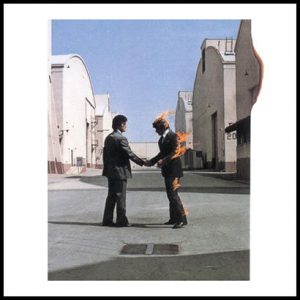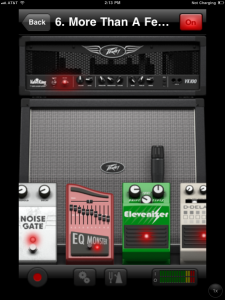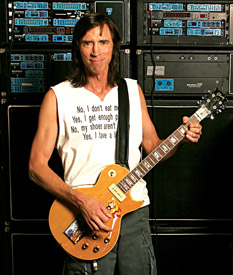There isn’t a good YouTube link to the whole studio version, but this live version is as close as it gets. Here is just the solo in case you don’t want to sit through a 13-minute song: Shine On You Crazy Diamond Solo
I heard my first Pink Floyd song sitting on the red carpet of my family room in Madison, Wisconsin, when I was about 9 or 10 years old. I wasn’t a fan at first — my Dad played Dark Side of the Moon for me and my brother and I thought it was long and boring, and some parts were downright creepy — the ticking clocks, and heartbeats and screaming maniacs and all that. But my Dad was a huge Pink Floyd fan, and he bought each new album and played them for us as they came out.
 The next Pink Floyd album my Dad played caught my attention, though. The opening song on Wish You Were Here began with a slow, methodical build with subtle organ tones, with sparse bluesy guitar licks layered over. The first nine minutes of the song were all solo, alternating guitar and keyboard, and David Gilmour’s clean, poetic style made a huge impression on me. His solos were like verses unto themselves, and when the vocals did come in, his interspersed guitar work played like a counter-melody that was haunting and brilliant.
The next Pink Floyd album my Dad played caught my attention, though. The opening song on Wish You Were Here began with a slow, methodical build with subtle organ tones, with sparse bluesy guitar licks layered over. The first nine minutes of the song were all solo, alternating guitar and keyboard, and David Gilmour’s clean, poetic style made a huge impression on me. His solos were like verses unto themselves, and when the vocals did come in, his interspersed guitar work played like a counter-melody that was haunting and brilliant.
Over the years, I’ve grown to love Pink Floyd, and David Gilmour has become my favorite guitarist. Others might have faster licks, but his brutally clean tone and silky smooth playing makes each solo a story. I can’t even hope to match his style, but I hope to get close enough to do the song justice, and I’m very excited to be learning some of his techniques.
David is known for this signature black Fender Stratocaster. I no longer own a Strat. I have been playing a Gibson Les Paul Studio for all the previous solos, but there’s just no way to get the same tone out of my Les Paul, especially since a tremolo bar is required to match the solo. My good friend George graciously let me borrow his reissue ’57 Strat, so I can come closer to the Gilmour sound. It’s been a joy noodling around on the Strat so far, and I can’t wait to dive more fully into the solo.
Resources:
Backing Track: http://www.guitarbackingtrack.com/play/pink_floyd/shine_on.htm
Tabs: http://www.911tabs.com/link/?272481
Instructional Video: http://www.youtube.com/watch?v=_sZpeOG8EzU
Inspiration:
Pink Floyd performing the song live, sans Roger Waters: http://www.youtube.com/watch?v=5G5pIta5CNU



